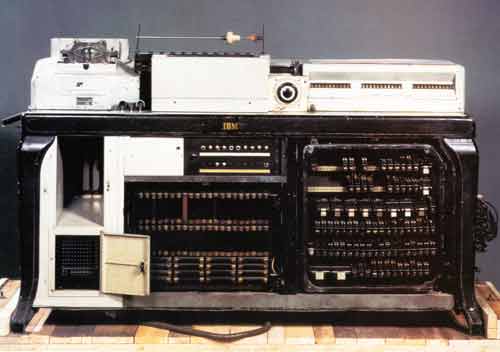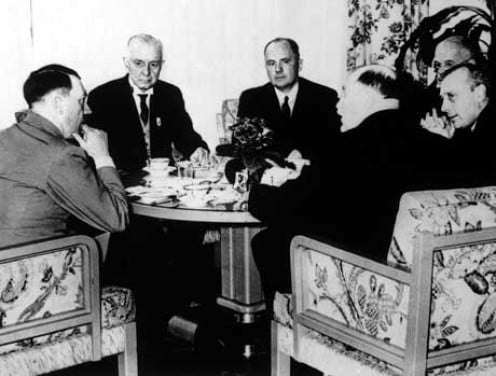IBM – HOLOCAUST – and The Human Microchipping Agenda – The We the People will not be Chipped – No Verichip Inside Movement, is based on the irrefutable fact, that mankind has inalienable human rights that are absolute and can not be debased, nor perverted. Human life can not be degraded to a 16 digit RFID chip number embedded under you skin under any circumstance. By uniting on this common ground, we can send a strong message to the IBM funded Verichip that
We The People Will Not Be Chipped!
IBM and the Holocaust tells the story of the involvement of this major US corporation in the establishment of Hitler’s Third Reich and the destruction of European Jewry. IBM helped the Nazis carry through their policy of genocide. Without this assistance, Hitler’s regime would not have been able to carry through its extermination plan with such efficiency. IBM’s machines were used at all stages of the persecution of the Jews. They collected the necessary information to identify the Nazis’ victims, first to enforce the bar on Jews working in certain academic, professional and government jobs and later to carry out mass evictions from their homes and into the ghettoes.
IBM technology was used to organise the railways, so that millions of Nazi’ victims could be transported to the concentration camps, where they were immediately led into the gas chambers. There were Hollerith departments at nearly every concentration camp, which registered the arrival of inmates, organised the allocation of slave labourers, and even kept tallies on the deaths of prisoners.
IBM was involved in virtually every aspect of the Third Reich’s operations. IBM leased, serviced and upgraded more than 2,000 IBM multi-machine sets throughout Germany, and thousands more throughout Nazi occupied Europe. IBM developed custom-designed cards used by the Nazis; with as many as 1.5 billion punch cards being produced in Germany annually.
The IBM punch card and card sorting system–a precursor to the computer. IBM, primarily through its German subsidiary, made Hitler’s program of Jewish destruction a technologic mission the company pursued with chilling success. IBM Germany, using its own staff and equipment, designed, executed, and supplied the indispensable technologic assistance Hitler’s Third Reich needed to accomplish what had never been done before–the automation of human destruction. More than 2,000 such multi-machine sets were dispatched throughout Germany, and thousands more throughout German-dominated Europe. Card sorting operations were established in every major concentration camp. People were moved from place to place, systematically worked to death, and their remains cataloged with icy automation.

IBM Germany, known in those days as Deutsche Hollerith Maschinen Gesellschaft, or Dehomag, did not simply sell the Reich machines and then walk away. IBM’s subsidiary, with the knowledge of its New York headquarters, enthusiastically custom-designed the complex devices and specialized applications as an official corporate undertaking. Dehomag’s top management was comprised of openly rabid Nazis who were arrested after the war for their Party affiliation. IBM NY always understood–from the outset in 1933–that it was courting and doing business with the upper echelon of the Nazi Party. The company leveraged its Nazi Party connections to continuously enhance its business relationship with Hitler’s Reich, in Germany and throughout Nazi-dominated Europe.
Dehomag and other IBM subsidiaries custom-designed the applications. Its technicians sent mock-ups of punch cards back and forth to Reich offices until the data columns were acceptable, much as any software designer would today. Punch cards could only be designed, printed, and purchased from one source: IBM. The machines were not sold, they were leased, and regularly maintained and upgraded by only one source: IBM. IBM subsidiaries trained the Nazi officers and their surrogates throughout Europe, set up branch offices and local dealerships throughout Nazi Europe staffed by a revolving door of IBM employees, and scoured paper mills to produce as many as 1.5 billion punch cards a year in Germany alone. Moreover, the fragile machines were serviced on site about once per month, even when that site was in or near a concentration camp. IBM Germany’s headquarters in Berlin maintained duplicates of many code books, much as any IBM service bureau today would maintain data backups for computers.

IBM Germany’s census operations and similar advanced people counting and registration technologies. IBM was founded in 1898 by German inventor Herman Hollerith as a census tabulating company. Census was its business. But when IBM Germany formed its philosophical and technologic alliance with Nazi Germany, census and registration took on a new mission. IBM Germany invented the racial census–listing not just religious affiliation, but bloodline going back generations. This was the Nazi data lust. Not just to count the Jews–but to identify them. Hollerith established a near-world wide monopoly, leasing rather than selling his machines, but sold up in 1911 and the company was merged into the Computing-Tabulating-Recording Company. Under the stewardship of ex-sewing machine salesman Thomas Watson, CTR was transformed in the International Business Machines Corporation. Watson, a ruthless businessman, established a paternalistic hierarchy in the company. Watson spoke of the “IBM family” that included not only his workers, but also their wives and children, who would also be trained in the “IBM spirit” and would be well looked after and integrated into his empire.
In 1922, with hyperinflation in Germany leading to the collapse of the currency, Watson took over Dehomag (Deutsche Hollerith Maschinen Gesellschaft) that had used the punch card technology under licence. This German subsidiary would later play a crucial role in IBM’s business alliance with the Third Reich. By 1933, when Hitler came to power, Watson had transformed the formerly ailing German company into IBM’s flag ship—producing more than three times above its quota.
How much did IBM know? Some of it IBM knew on a daily basis throughout the 12-year Reich. The worst of it IBM preferred not to know–“don’t ask, don’t tell” was the order of the day. Yet IBM NY officials, and frequently Watson’s personal representatives, Harrison Chauncey and Werner Lier, were almost constantly in Berlin or Geneva, monitoring activities, ensuring that the parent company in New York was not cut out of any of the profits or business opportunities Nazism presented. When U.S. law made such direct contact illegal, IBM’s Swiss office became the nexus, providing the New York office continuous information and credible deniabilitWhether it was in Czechoslovakia, Poland, Hungary, Bulgaria, Romania, Scandinavia, Sweden, Belgium, the Netherlands or France the Nazi war machine relied upon IBM technology. It helped to organise the allocation of military equipment and personnel just as efficiently as it assisted in identifying Jews and facilitated their transportation to the death camps by train. Although it is true that even without the collaboration of IBM, Hitler fascism would still have carried through its policy of genocide, it is equally true that without it, the Nazis could not have proceeded with such ruthless efficiency.
After the war, IBM was able to retrieve its German assets, machines and profits alike with astonishing ease. At the end of 1946, Dehomag was valued at more than 56.6 million Reich Marks ($230m today) with a gross profit of 7.5 million Reich Marks ($30m). Its machines had been salvaged, its profits preserved and its corporate value protected.
Firstly, Dehomag’s interests were well looked after by the Nazi policy of custodianship of enemy property. That meant that a custodian was designated by the Reich Economics Ministry to run foreign businesses, so as to keep the companies profitable and productive. Since it was forbidden to transfer money out the country, Dehomag’s profits were kept in the company bank accounts, where they remained frozen during wartime but were easily collected thereafter.
Secondly, the Hollerith technology continued to be used by the Nazis, even after their military fortunes began to change. Since the cards could provide damning evidence of the Nazis’ atrocities, when the Allies advanced and German positions in the occupied territories, the Nazis would destroy them. But they transported the machines out of reach of the advancing armies.
Thirdly, the Allied powers also had an interest in keeping the machines intact. Already in December 1943, the United States government concluded that strategically it should save Hitler’s Hollerith machines because they held the keys to a smooth military occupation of Germany. To this end, all the Allied powers used Dehomag to conduct economic surveys, collect industrial statistics and carry out censuses.
Dehomag emerged from the Hitler years with relatively little damage and virtually ready to assume business as usual. Hence, when the war ended, IBM New York was able to recapture its problematic but valuable subsidiary, recover its machines, and assimilate all the profits”. In 1949, Dehomag’s name was changed to IBM Germany.
Did IBM help out Nazi’s in WWII ? We will pry out the truth in this article.
If you take a look at the IBM patent number of Identification and tracking of a person using RFID- tagged items the patent number is ‘20020165758’ the total is 36 but if you split up the 36 it becomes 3 “6.6.6” Has anyone notices how the number of the beast is always involved with the Satanic occult? Lets take a look further into the truth of what really happened.
RFID (Radio Frequency ID) chips are a growing phenomenon, from a $2.7bn industry in 2006 IDTechEx reckon it will be 10 times that in 2016. Perhaps the most common use of RFID technology today is retail security and inventory management. All US and many UK passports now issued have RFID chips containing biometric identification data. Your plastic payment card has one. Your pet may have one. Even your clothes may have them – Merloni has designed a washing machine that can read care instructions sent by an RFID chip sewn into garments and then adjust the washing process accordingly. The smallest of these chips is just 0.05mm by 0.05mm, and virtually flat – though the smallest working antenna (which they require) is 80 times bigger.




